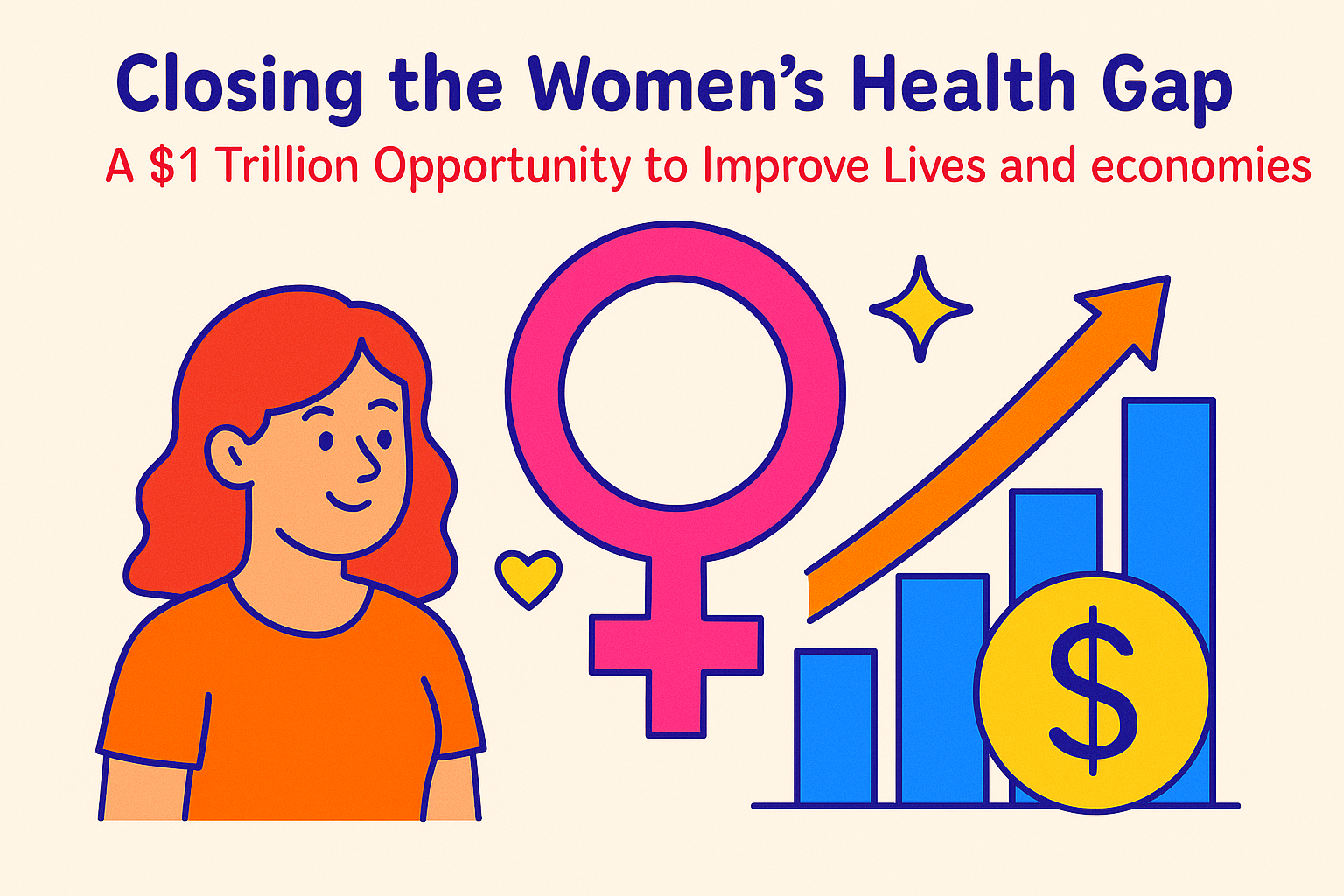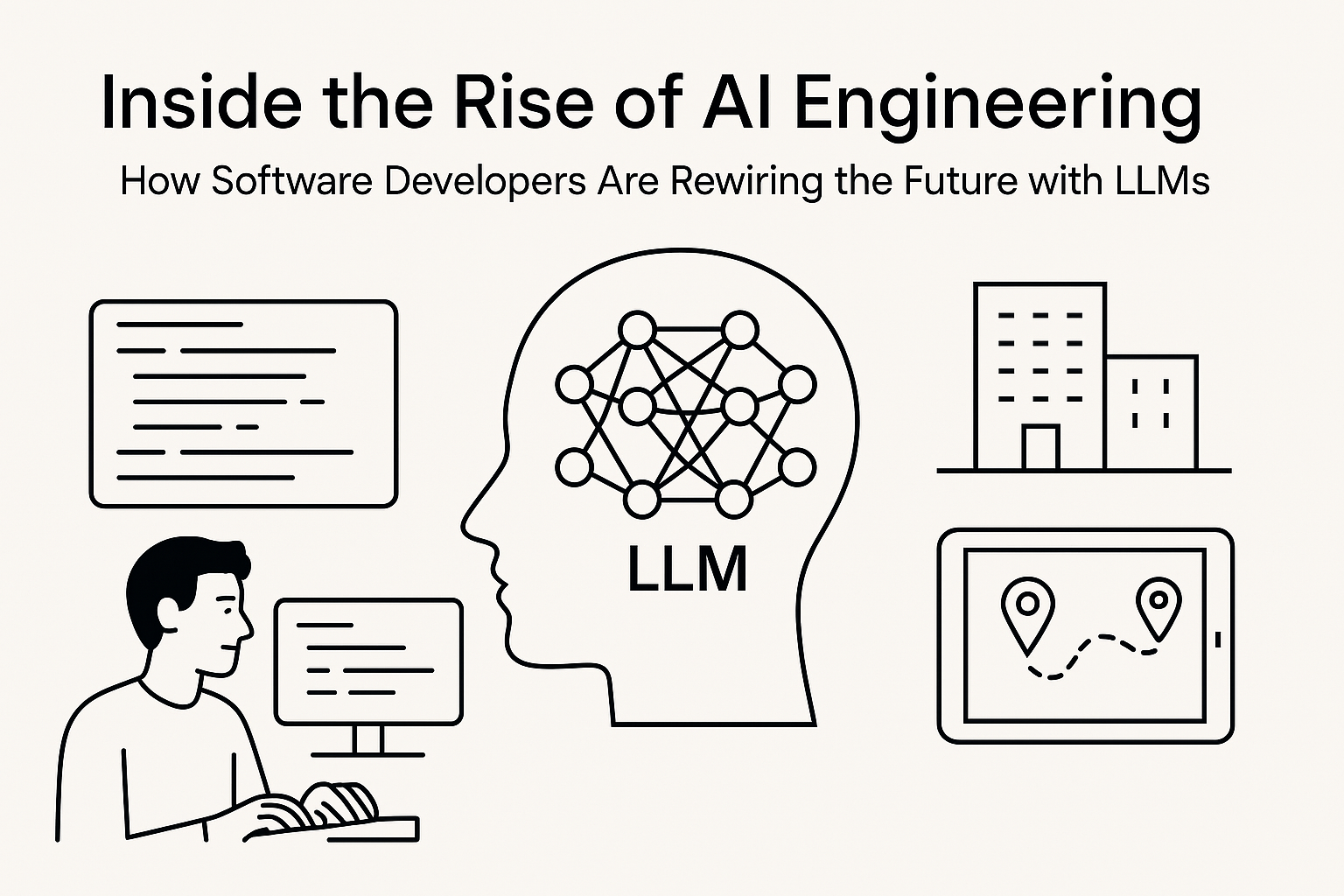The Women’s Health Revolution: A Trillion Dollar Opportunity for Equity, Innovation, and Global Growth

How closing the gender health gap can unlock economic potential, fuel innovation, and deliver generational impact—with a key role for Virtual Delivery Centers (VDCs)
For over two centuries, humanity has celebrated dramatic strides in longevity. Global life expectancy has more than doubled, climbing from just 30 years in 1800 to over 73 years by 2018. Yet behind this celebratory arc lies an unspoken, unjust truth: while women live longer, they also live sicker.
The real gap we must reckon with is not just life span—but health span. On average, women spend nine more years in poor health than men. These are years diminished by chronic illness, misdiagnosis, inadequate care, and systemic neglect. The price is steep: limited participation in the workforce, diminished productivity, and reduced quality of life. But this isn’t just a moral crisis—it’s an economic one.
New analysis reveals that closing the women’s health gap could unlock $1 trillion in annual global GDP by 2040. And this estimate may still be conservative, given the massive underreporting, under-researching, and underfunding of conditions that disproportionately affect women.
In this blog, we explore:
The scope of the gender health gap and its roots in science, care, and data
Economic and societal impacts of inequality in women’s health
How Virtual Delivery Centers (VDCs) offer a scalable model to accelerate equitable innovation
A roadmap to transform women’s health into a cornerstone of shared global progress
While women are living longer than ever, they are not living healthier. On average, a woman spends nearly a decade of her life in poor health—often untreated, misdiagnosed, or overlooked. This disparity erodes not only her well-being, but her capacity to work, earn, care, and contribute.
Quantified in disability-adjusted life years (DALYs), the women’s health gap amounts to a staggering 75 million years of life lost annually to poor health or premature death. It’s the equivalent of seven days per woman per year across the globe.
But this is more than a health crisis—it is an economic black hole. New modeling shows that closing this gap could generate $1 trillion in additional GDP annually by 2040, equivalent to unlocking the full-time productivity of 137 million women.
And this impact ripples beyond economics: from healthier children to more resilient communities, improved women's health raises the tide for everyone.
Too often, women’s health is narrowly equated with sexual and reproductive care. In reality, that’s just a small part of the picture.
Only 5% of women’s overall health burden stems from maternal or reproductive issues. The real weight comes from conditions that affect women more often or differently—such as depression, autoimmune diseases, migraines, cardiovascular issues, and menopause-related complications.
Nearly half of this burden affects women in their prime working years, directly impacting their ability to participate in the workforce or maintain consistent productivity. The compounding effect is one of poverty, economic dependency, and lost societal potential.
The foundation of modern medicine was built largely on male-centric biology. For decades, clinical trials excluded women, assuming that findings from men would apply universally. Animal models, treatment protocols, and diagnostic thresholds were based on male norms.
The result? A legacy of misdiagnosis, poor treatment efficacy, and dangerous blind spots. Women face:
Lower effectiveness from asthma and heart disease treatments
Higher risk of adverse reactions to medications
Delays in diagnosis for hundreds of conditions (e.g., 2.5 years later for cancer; 4.5 years later for diabetes)
Women are 3.5x more likely than men to experience drug withdrawals due to health risks. Yet most drug pipelines still underinvest in non-fatal but debilitating conditions like endometriosis or menopause, which affect quality of life for millions.
Science cannot advance without data—but half of the health interventions studied don’t include sex-specific results. This absence of granular, sex-disaggregated data across epidemiology, clinical trials, and even AI training datasets leads to underinvestment, poor diagnostics, and generic, one-size-fits-men solutions.
For example:
Endometriosis may affect up to 190 million women, yet many are undiagnosed for nearly a decade
Menopause, experienced by all biologically female individuals, is barely classified as a health issue in global databases
In many LMICs, maternal mortality remains under-tracked, obscuring needs and delaying aid
The cost of this data void is enormous—not just in misdiagnosis, but in missed market potential, misguided funding, and underdeveloped health systems.
Even when women seek help, they face systemic barriers at every step:
Delayed diagnosis: Women are seven times more likely to be discharged during a heart attack
Higher out-of-pocket costs: Women spend more on healthcare than men in nearly every country
Lower insurance coverage: In countries like India and Switzerland, women pay more for similar health plans
Women also miss work due to issues like period pain—affecting both personal income and national productivity. Access to basic menstrual hygiene is still a challenge for 500 million women globally.
Reform is not impossible. In Bangladesh, when one factory provided pads and education, female absenteeism dropped from 73% to 3%. When midwives are properly trained, maternal deaths can be reduced by 65%.
The potential return is immense. For every $1 invested in women’s health, $3 is generated in economic output. In high-income countries, this return can reach $3.50. Even in low-income nations, the return remains strong at $2 to $1.
Yet public funding tells another story:
Only 11% of the NIH budget goes to women’s health research
Five times more studies have been done on erectile dysfunction than on PMS
Endometriosis, affecting up to 10% of women globally, has only 33 treatments in the pipeline
This is a missed market. As shown by the $2.1 billion success of Viagra, conditions with high unmet need and prevalence (like menopause or fibroids) present tremendous business potential—but only if recognized and supported.
Virtual Delivery Centers (VDCs) offer a new paradigm to accelerate impact in women's health—especially in tackling the three root causes: data gaps, fragmented care systems, and underinvestment.
Here’s how VDCs fit in:
Inclusive, Decentralized R&D: VDCs enable research teams across geographies to co-develop, validate, and deploy women-specific health models. Female-led startups or researchers in low-resource settings can access world-class infrastructure and collaborators—virtually.
Scalable Data Aggregation and AI Fairness: Using a VDC model, institutions can crowdsource global data while enforcing fairness protocols in AI/ML models—ensuring sex-disaggregated, ethically sourced datasets across geographies.
Implementation at Scale: Healthcare systems can use VDCs to pilot gender-sensitive programs across clinics, virtual care settings, or rural communities—without building new infrastructure. For instance, a VDC can enable midwife training, menstrual health support, and affordable digital diagnostics across LMICs.
FemTech Enablement: Investors and governments can fund VDC-powered startups to develop tailored solutions for underfunded conditions—accelerating time to market and reducing overhead.
By integrating expertise, research, and technology without borders, VDCs are uniquely positioned to bridge the gender gap in healthcare faster than traditional models ever could.
Closing the women’s health gap demands collective, coordinated action across five fronts:
Invest in women-centric R&D: Build equity into clinical trials, prioritize conditions affecting women disproportionately, and fund innovation in overlooked areas like endometriosis, fibroids, menopause, and pain conditions.
Fix the data deficit: Enforce sex- and gender-disaggregated reporting across public health and scientific research. Invest in AI models that actively counter gender bias.
Deliver gender-responsive care: Redesign care systems to reflect sex-specific symptoms and outcomes. Train providers, update medical education, and reform outdated insurance models.
Fund the future with new financing models: Use gender-lens investing, public-private partnerships, and outcome-based funding to unlock innovation. VDCs can accelerate pipeline development and go-to-market execution.
Support women in the workplace: Employers must provide flexible policies, insurance parity, and mental health support. Menopause, PMS, and maternal care must be addressed in HR benefits and leadership conversations.
The women’s health gap is not an inevitable flaw in the system—it is the product of centuries of under-representation, under-research, and underfunding. But it is also one of the greatest levers we have to unlock global prosperity, resilience, and inclusion.
The choice is no longer whether to act—it is who will lead.
Governments, corporations, life sciences, healthcare innovators, and grassroots organizations must now step forward—not just to fund or study women's health, but to rebuild the system in which it exists.
This is not only a chance to do what is right, but to do what is smart.
In this trillion-dollar opportunity lies a better world—for women, for economies, for all.

Discover how software developers are transitioning into AI engineers, building real-world applications using LLMs. Dive into their tech stacks, challenges, and the rise of Virtual Delivery Centers (VDCs) powering this next wave of innovation.